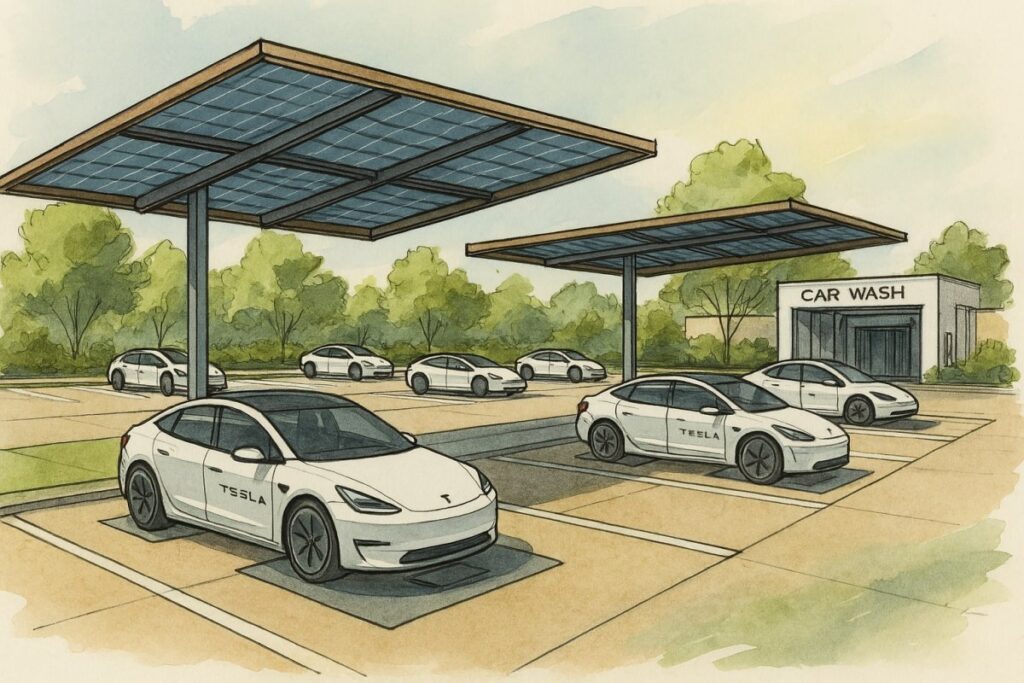Exploring the Future of Tesla’s Robotaxi Network Charging Stations
On a rainy April 1st, a curious author delved into April Fools’ jokes to separate fact from fiction. Among the humorous pranks, one idea stood out – a Cybercab Charging Station/Cleaning Hub.
While the image above is a playful creation by MarcoRP on X, it sparked a thought-provoking discussion on what a charging station for a Cybercab fleet, like Tesla’s Robotaxi, might entail.
The Vision for Cybercab Wireless Charging Sites
To support a fleet of Cybercabs efficiently, Tesla will need charging stations that can accommodate multiple vehicles simultaneously. These stations must cover a large metropolitan area while remaining cost-effective to construct.
Considering the Cybercab’s estimated 50 kWh battery and 300-mile range, most vehicles may only require overnight charging. With a projected charging rate of 10 kW, a Cybercab could fully charge in approximately 5 hours.
Calculations and Charging Efficiency
Tesla’s upcoming V4 Supercharger units are expected to handle 1.5MW per cabinet, enabling simultaneous charging for up to 100 Cybercabs wirelessly. Utilizing Tesla’s advanced beam-forming technology, these stations can maintain high efficiency at every charging stall.
By leveraging cheaper electricity rates during off-peak hours, a fleet of 100 Cybercabs could be fully charged overnight, ready for the morning commute.
While these scenarios are speculative, Tesla’s recent actions at Giga Texas suggest that they are exploring large-scale testing of such charging infrastructure.
With the anticipated deployment of V4 Superchargers and the impending launch of Robotaxi services, Tesla’s innovative approach to charging infrastructure is set to revolutionize urban transportation.

